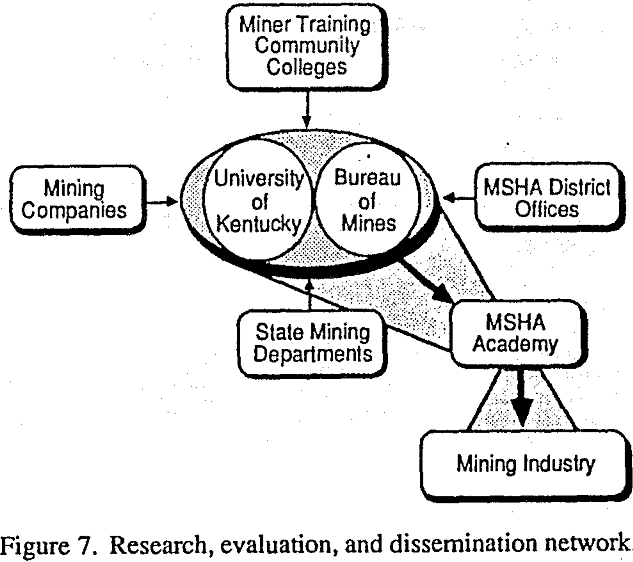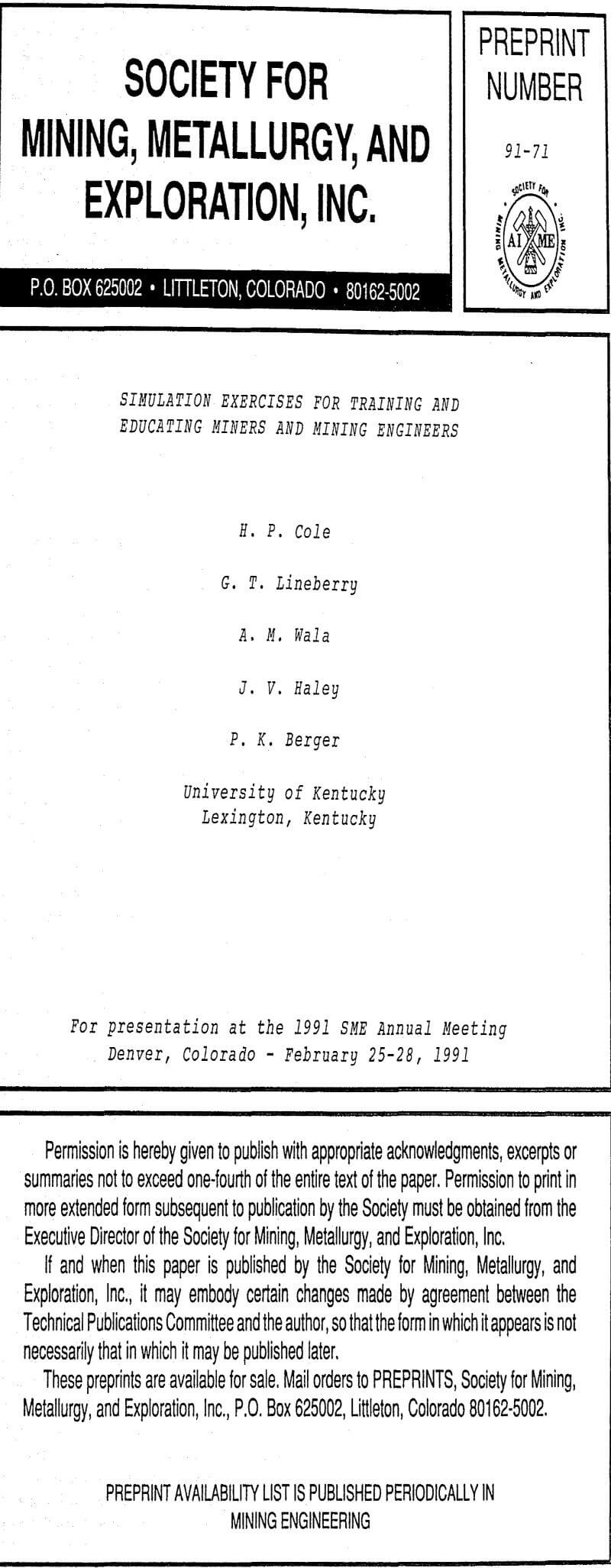Table of Contents
In the past mining accidents were often a consequence of poorly designed equipment and inefficient mining systems. As mining equipment and technology has become better engineered, safer, and more complex, the frequency of accidents has dramatically decreased, but the proportion of accidents occurring because of decision errors made by the person or persons involved have increased.
Most of the simulation exercises developed make use of the paper and pencil “latent image” technique. In this format, problems based on actual mine emergencies are presented in written form with accompanying diagrams, schematics, and mine maps. As the miner works through a problem, step by step, he or she selects options or choices at each major decision point. Choices are marked on an answer sheet using a special pen that develops an invisible ink message (a latent image).


Regardless of its format, a good simulation exercise is like a good story. It has a plot, a theme, characters, goals, and obstacles to those goals. As the problem unfolds over time, predicaments and dilemmas develop. The person working the exercise feels he or she is experiencing a real problem as it develops, not knowing what might happen next. However, unlike a story, the exercise requires the person to gather information, interpret data, make choices and decisions, remember and use relevant facts and information, all within the limits of the available resources described in the problem. To be effective, such exercises must be short, time efficient, easy to read, and easy to use. They also must deal with authentic problems and decision alternatives in a realistic manner.
Purpose
Each exercise is designed to simultaneously teach and test miners’ problem-solving skills in the context of authentic mine emergencies. The exercises provide opportunities for miners to practice skills of information gathering, decision making, and critical thinking needed to prevent or control these nonroutine events and situations.

Similar simulation exercises have been used to teach and test proficiency of physicians, veterinarians, respiratory therapists, nurses, and other medical staff to better prepare them for coping with real-life problems that demand good judgment and decision making. Simulation exercises are also used with civilian and military flight crews and other technical personnel for the same reasons.



Field Testing
Field testing, revision, and dissemination of the exercises was facilitated by the network of agencies and persons. In the first year of the contract, BRASH researchers began to assemble a group of mining agencies and personnel to assist with the contract work. This extensive mining industry network of training and technical personnel facilitated the rapid development and evaluation of the materials.

Experts from this network assisted in the initial selection and face validity studies of exercise content. Later, during the field testing, the performance scores of samples of experts and other miners with less expertise were compared to establish the validity of the exercises in discriminating among levels of expertise. Using these empirical data, the exercises were revised to their final form before they were released for national distribution.
The majority of the exercises are designed for underground coal mines, a condition of the original contact. Within the last two years, a number of exercises were designed for surface mines, metal and non-metal mines, and coal and ore preparation plants. A few exercises have been developed for management training in areas of employee rights and relations.
The simulations may be worked either individually or cooperatively by small groups of miners. Miners enjoy the cooperative method of problem solving, which is similar to the way they work together in their jobs. Working an exercise as a group effort also provides opportunity for miners to learn from one another and encourages team work in preventing and responding to real-life emergency situations.
Effectiveness
Three points can be made about the effectiveness of the exercises. These concern: 1) what miners think about the exercises, 2) what trainers think about the exercises, and 3) the performance scores of miners on the exercises.


The exercises that have been developed and field tested fall into three major categories. The first category includes exercises concerned with mine technical problems, such as ventilation arrangements, fires, mine gases, haulage and electrical problems, safe work practices, ground control, emergency escape and evacuation, and fire fighting. These exercises are placed in the Mine Technical Training (MTT) category.
The second category of exercises are concerned with first-aid procedures, including removal of victims from dangerous situations, conducting hands-on assessment of victims injuries, interpreting victims vital signs, administering first-aid treatment procedures, and properly activating and communicating with the local emergency medical services system. These types of exercises are placed in the First-Aid Training (FAT) category.


The validity of the exercises was determined in several ways, including judgments of content validity by experts, the degree to which individual decision alternatives discriminate positively and statistically significantly among persons with high and low total scores on a given exercise, and the ability of the exercise total scores to discriminate statistically significantly among groups with different levels of expertise.

.

